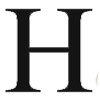| Table 6-7 Types of Flaps: Advancement, Rotation, and Transpositional |
| | Type of Flap | | Description | | Appearance |
| Advancement flap |
| Unidirectional, uncomplicated advancement of leading edge of flap |
| | Unilateral advancement flap (U-plasty) | | Defect excised as square and incision extended in same direction on two but opposite parallel sides of defect; burow’s triangle created at end of each extension and flap slides over defect creating U-shaped scar | | 
outline |
| | Bilateral advancement flap (H-plasty) | | Double U-plasty or double advancement flap; two U-plasty flaps created as mirror images of one another; most useful for scalp and eyebrow defects (H-plasty) | | 
outline |
| | Bilateral T-plasty
(A–T, O–T) | | Linear repair of wound perpendicular to preexisting cosmetic boundary; useful for above brow, upper cutaneous lateral lip | | 
outline |
| | Burow’s advancement flap | | Defect excised in shape of equilateral triangle and one arm of triangle extended; burow’s triangle created at contralateral side of extension and tissue slides to cover defect | | 
outline |
| | Island pedicle flap | | Special advancement flap: most of vascular supply from a subcutaneous pedicle (remains attached to central portion of flap) and all dermal margins of flap severed before advanced | | 
outline |
| Rotation flap |
| | Recruits adjacent tissue laxity and directs wound tension vectors away from primary surgical defect; curvilinear incision (arc) adjacent to primary defect and flap rotated to primary defect site; useful for scalp, temple, and medial cheek defects |
| | Dorsal nasal rotation flap | | Special type of rotation flap; long sweeping arc that involves rotation of entire nasal dorsum (elevated at level of perichondrium or periosteum) | | 
outline |
| | Bilateral advancement rotational flap
(O – Z flap) | | Bilateral rotation flap converting circular defect into a Z-shaped incision line, most useful on scalp (can be purely rotational or advancement with rotation) | | 
outline |
| Transposition flap |
| | Most complex design, redirects wound closure tension, moves tissue from area of surplus to area of need by transpositioning across intervening islands of unaffected tissue |
| | Rhomboid transposition flap | | Rhomboidal-shaped flap created adjacent to round or oval defect and transposed into defect | | 
outline |
| | Bilobed transposition flap | | Recruits tissue from proximal nasal dorsum (more laxity) and transfers to defect, useful on distal nose | | 
outline |
| | Nasolabial transposition flap | | Flap from medial cheek adjacent to melolabial fold transposed to alar wound, useful in lateral and central alar wounds | | 
outline |
| | Z-plasty | | Useful for scars crossing relaxed tension lines or releasing contractures (redistributes tension over wound) | | 
outline |
| | Paramedian forehead flap | | 2 stage flap for repair of subtotal to total nasal defects; forehead flap designed vertically to preserve supratrochlear artery supply; flap rotated 180° and sutured into nasal defect; 2–3 weeks later pedicle divided and repositioned | | Axial pattern flap as well |
| | | | | | |